Description
Examine all the facets of a young child’s development. Children are assessed in the five key developmental domains of cognition, language, social-emotional, motor and adaptive behaviour
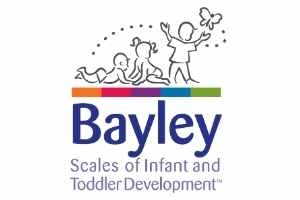
Examine all the facets of a young child’s development. Children are assessed in the five key developmental domains of cognition, language, social-emotional, motor and adaptive behaviour
Examine all the facets of a young child’s development. Children are assessed in the five key developmental domains of cognition, language, social-emotional, motor and adaptive behaviour
Nancy Bayley, PhD
Overview:Examine all the facets of a young child’s development
Age Range:1 month to 42 months
Administration:Individual – 30 to 90 minutes
Completion Time:30 to 90 minutes (depending upon age of child)
Norms:Norm-referenced
Scores/Interpretation:Index scores and Subtest Scaled scores
Publication Date:2005
Every child deserves to make his mark. Each should have every opportunity to reach his full potential. And you can help make that possible. With Bayley–III, you have the comprehensive tool you need to identify issues early on. To address early childhood situations before they become lifelong problems. And to give every child a chance to succeed. With Bayley–III, you have the power to make a positive impact, early and often.
Long known as the premier assessment for measuring developmental delays in the very young, this newest edition – the Bayley Scales of Infant and Toddler Development – Third Edition (Bayley–III) – combines the superior psychometric standards you expect with two additional scales and more clinically useful features than ever.
Plus . . . as a Bayley-III customer, you get unparalleled service and support from a highly credentialed sales team.
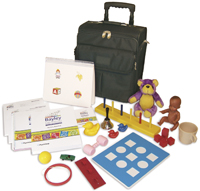
Even when a child can’t speak, he can tell us something. How he feels. How he thinks. How he interacts with the world around him. And we need to know how to read the signs. With Bayley-III, you can. You have a comprehensive tool for identifying, measuring, and assessing a child’s development.
For over 20 years, professionals working with infants and toddlers have relied on the proven Bayley Scales of Infant Development. And today, they have even greater reason to do so. With the new Bayley–III, professionals have the most comprehensive assessment tool for determining developmental delays in children one month to 42 months old.

Unlike other solutions that have manipulatives that can be cumbersome or time consuming, Bayley–III is easy to use and to transport. It’s also very easy to administer, and the results are exceedingly reliable. It is administered using a caregiver’s or parent’s involvement, allowing more input to be gathered from the child’s natural environment. Additionally, all assessment factors are based on the age of the child, allowing for more accurate developmental assessments.
Rolling case for easier portability
You must have the ability, not just to administer the test, but to analyze and interpret the results. Qualified personnel will likely have training in the following areas:
Sample qualified personnel: psychologists, psychiatrists, speech and language therapists, occupational and physical therapists specializing in early intervention, early interventionists, social workers, developmental pediatricians, pediatric nurse practitioners. Those who qualify will most likely have at least a Master’s degree.
If you are an appropriately trained, experienced practitioner in these areas, you can benefit from using Bayley–III.
The definitive solution for measuring the complete child.
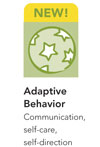
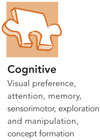

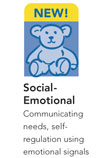
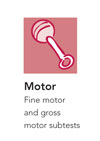
Five Developmental Domains
Table of Contents of Developmental Domains
Adaptive Behavior
Authored by ABAS®-II authors Patti L. Harrison, Ph.D. and Thomas Oakland, Ph.D.
Cognitive
Items measure age-appropriate skills including:
Language
Expressive communication
Assesses preverbal communications such as:
Receptive communication
Assesses preverbal behaviors and vocabulary development such as:
Motor
Fine motor
Fine motor skills associated with:
Items measure age-appropriate skills including:
Gross motor
Items assess:
Social-Emotional
Developed by Stanley Greenspan, M.D., one of the world’s leading experts in child development.
You can hand-score the assessment or using the Scoring Assistant software for quick and accurate reporting.
Bayley-III SA Parent Sample Report (PDF – 53kb)
Bayley-III SA Parent Sample Report Part 2 (PDF – 196kb)
Windows XP, Vista or Windows 7
Tools & Utilities
Getting to Know Your Rolling Bag (PDF – 935 KB)
Bayley-III Observational Checklist (PDF – 149 KB)
Lists nearly 100 items that can be easily observed at any time during administration. Use the checklist to familiarize yourself with those items that can be observed outside the standard administration order, saving precious administration time. Make paper copies or use a grease pencil to note observed items, then later transfer to the master record form or input to the Scoring Assistant.
Bayley-III Brochure
Information on the newly revised Bayley Scales of Infant and Toddler Development — Third Edition (Bayley-III). Order hard copy using ISBN 999-8914-337
Bayley-III Technical Report 1: Using the Bayley Scales of Infant and Toddler Development, Third Edition, to Assess Individuals with Severe Delays (PDF – 337 KB)
Bayley-III Technical Report 2: Factors Contributing to Differences Between Bayley–III and BSID–II Scores (PDF – 170 KB)
Visit our resource center to download the above information material.
Pearson Academy India, the training division of PCTA, conducts Bayley-III training workshops titled Bayley-III: Assessing Key Developmental Domains in Young Children.
Click here to learn more.

Includes: Administration Manual, Technical Manual, Cognitive, Language, and Motor Record Form, Pkg of 25, Stimulus Book, Picture Book, Manipulative Set, Social-emotional and Adaptive Behavior Questionnaire, Pkg of 25, Caregiver Report Form, Pkg of 25, and Rolling Case
ISBN: 9780158027241
To know the final price of this product, click the request a quote button.